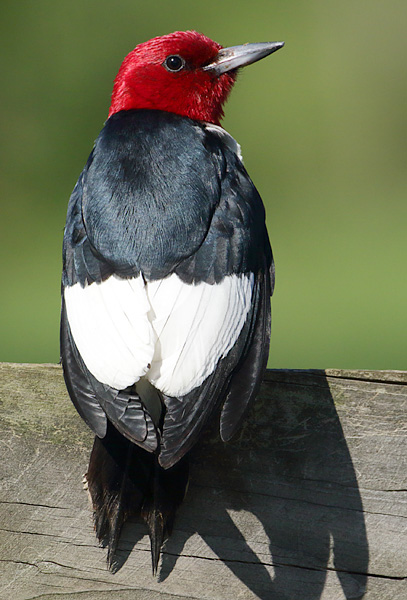
Red-headed Woodpecker
The Swoope area to the west of Staunton is a reliable site for finding a good number of avian species. The rolling hills, pasture land, and nearby mountains offer good habitat, and two large lakes provide habitat for waterfowl. Both lakes are on private property. One of the lakes is on the Boy Scout camp property, but can be view from a public road. The other, Smith Lake, is on private property, and does require permission from the land owner to go there. Walt Childs and I do have such permission, and Smith Lake is one of our first stops when we go birding in Swoope. Soon after we entered the Swoope area on Hewitt Road, a beautiful Red-headed Woodpecker land for a few moments on a fence just a few feet from my car window.

Red-headed Woodpecker
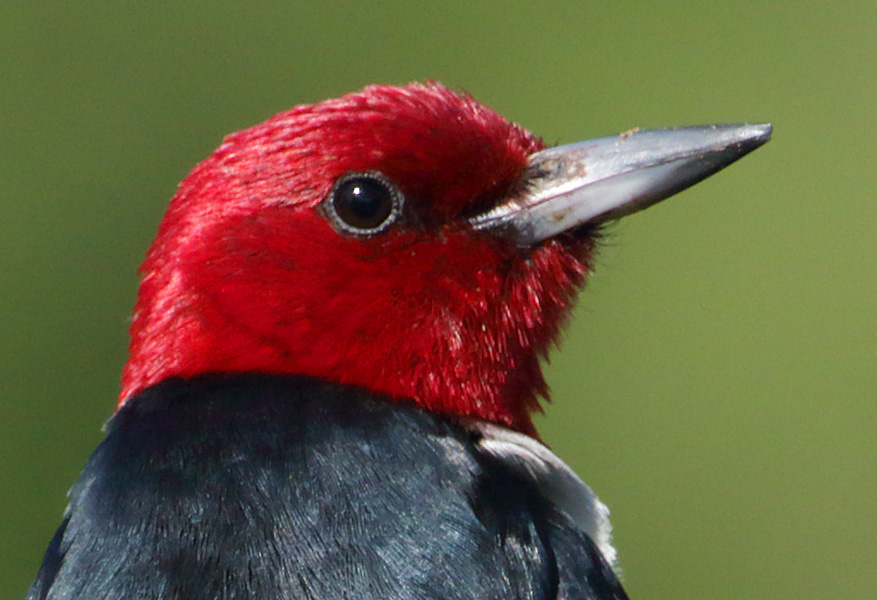
Red-headed Woodpecker (head detail)
We entered the private property and found eight avian species at Smith Lake. The water level was very low, but the only shorebird species we saw there was Killdeer.
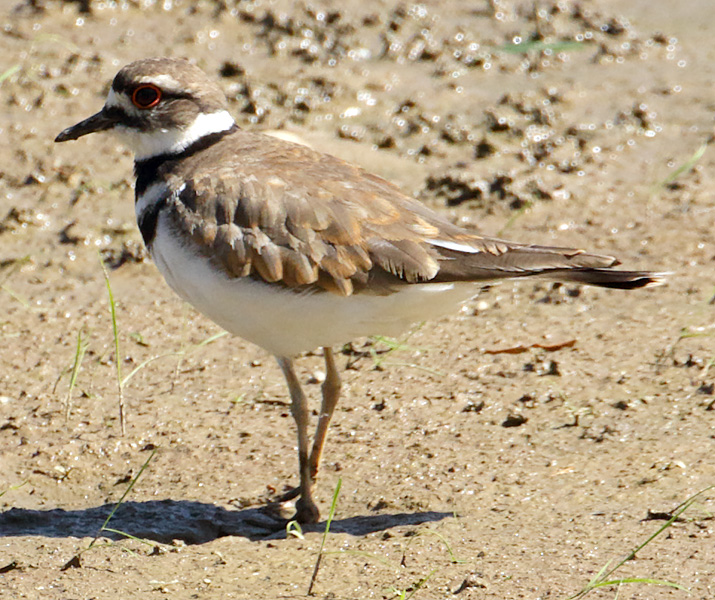
Killdeer
As I hiked along the lake edge, I saw several species, including a Yellow Warbler and a Willow Flycatcher that was sounding its Wit call.
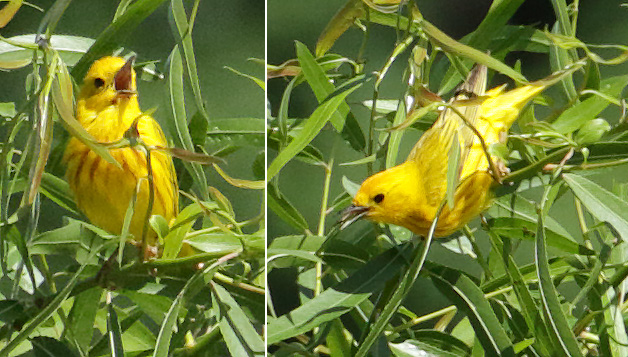
Yellow Warbler
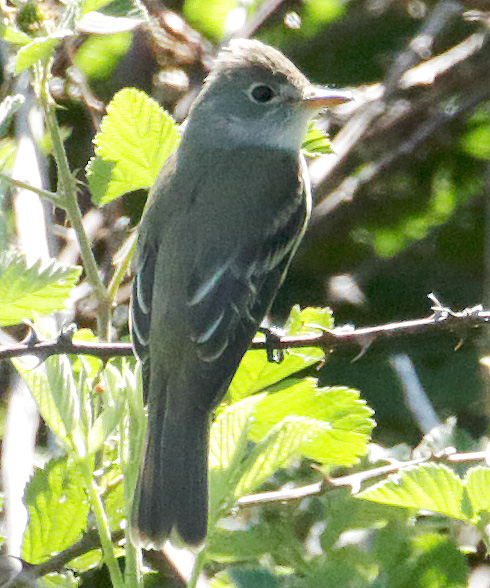
Willow Flycatcher
As we were getting ready to drive on from Smith Lake, both Walt and I saw a Northern Harrier flying low over a field to the south, but it quickly disappeared over the top of one of the rolling hills before I could get a photo. It must have been either a juvenile or a young adult female, as its breast color was a bright reddish-orange. Northern Harriers are commonly seen in Swoope, but are rare in the summer months. The Virginia "Gold Book" shows typical dates for this species in the mountains and valleys of Virginia between August 30 and April 30, and does state that a pair of them along with a juvenile was seen near Swoope on July 31, 2004. I really wanted to get a photo of the Northern Harrier to document the sighting, but we could not relocate the bird. In fact, raptors were sparse the entire day, other than Turkey Vultures. We only saw three Red-tailed Hawks and two American Kestrels, which are low counts for these species in Swoope.
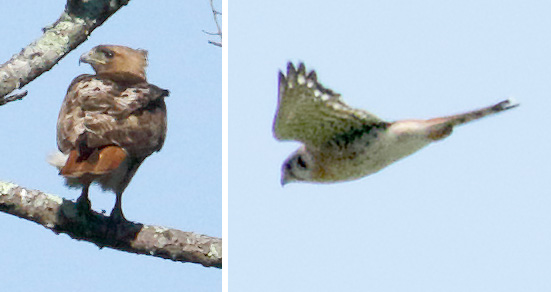
Red-tailed Hawk and American Kestrel
As we drove around, we saw multiple Brown Thrashers, Eastern Kingbirds, and Eastern Meadowlarks.
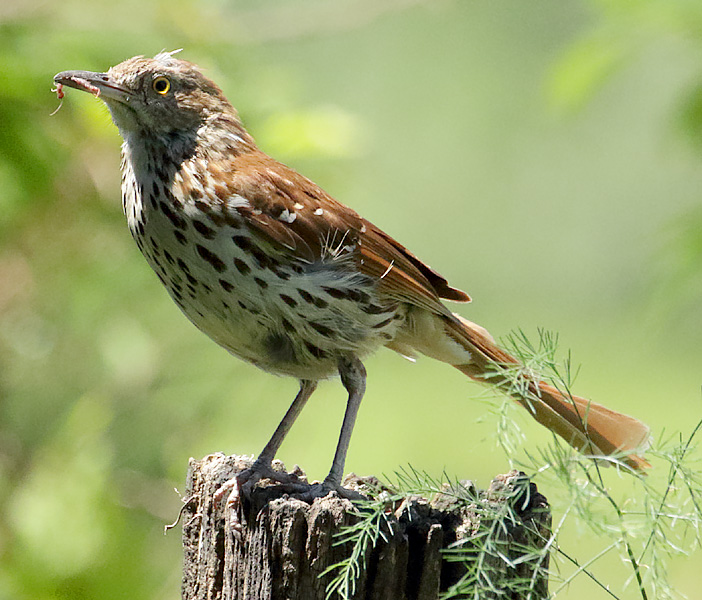
Brown Thrasher

Eastern Kingbird
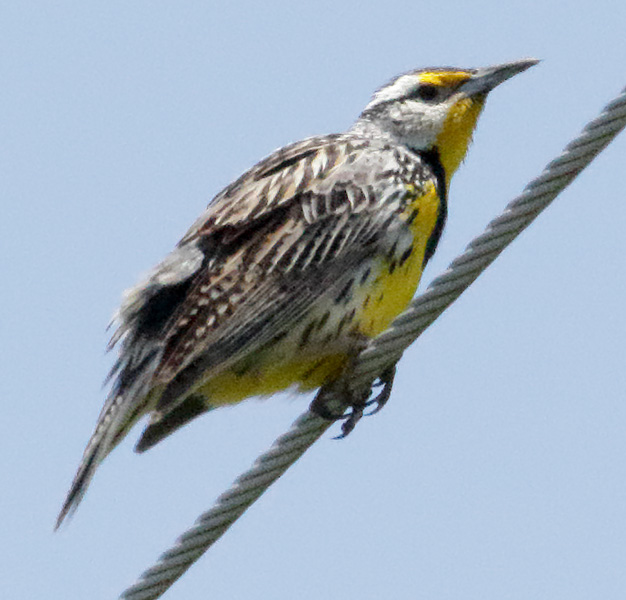
Eastern Meadowlark
On Cattleman Road near Livik Road, there is a large field that is left uncut for wildlife habitat. We saw multiple species there, including Mourning Doves, Cedar Waxwings, Red-winged Blackbirds, and a few flycatchers. Two Turkey Vultures were being chased away by some Red-winged Blackbirds.
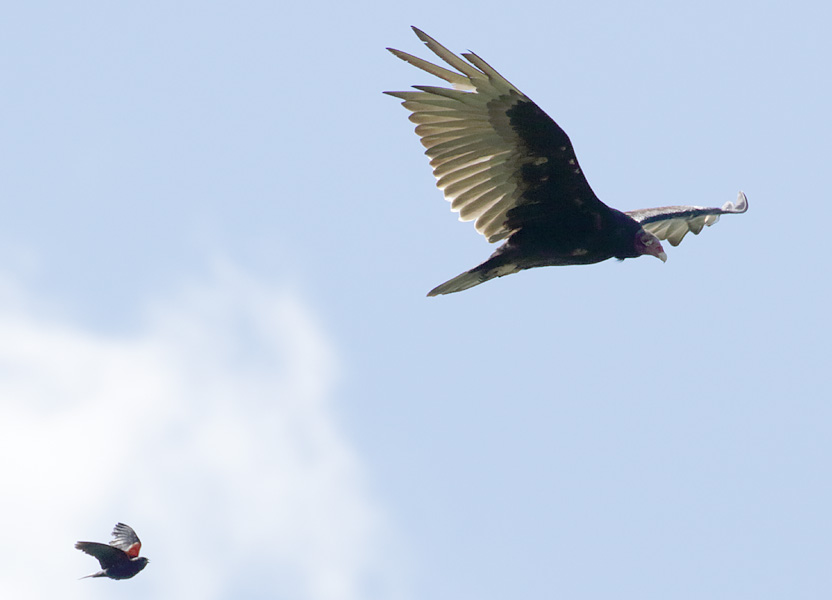
Turkey Vulture being chased away by Red-winged Blackbird
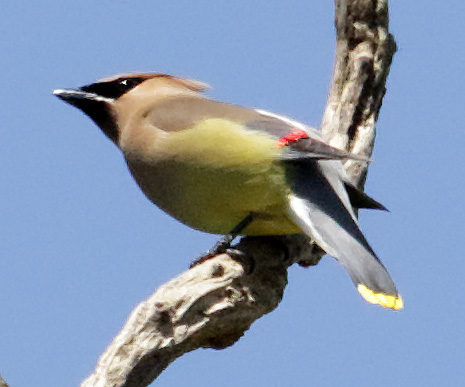
Cedar Waxwing
In that area, I heard the Wit call of a Willow Flycatcher, but did not see one when I heard the call. I did see a couple of flycatchers there. In the photo below, I feel confident that the one on the left is a Willow, but the one on the right carrying nesting material may be a Least Flycatcher. Although I did not hear a Least Flycatcher call or song, this bird seems to have shorter wingtips, a more rounded head, a smaller bill, and a somewhat bolder eye-ring.
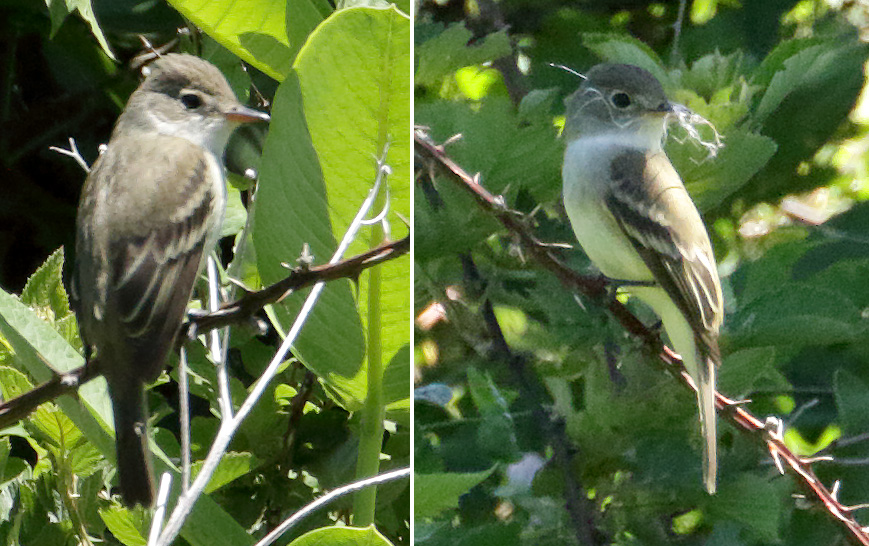
Flycatchers: Willow (left); Least(?) (right)
We drove the North Mountain Road Loop to look for Bald Eagles at their new nest, but did not see them. We did, however, get treated to a pair of Bobolinks, a rare summer resident.
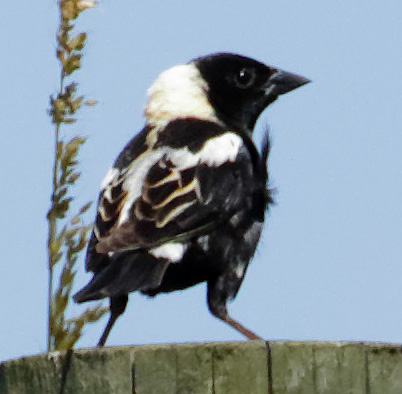
Bobolink
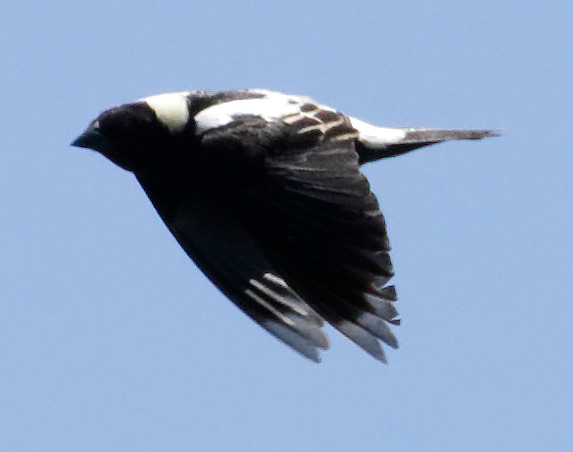
Bobolink
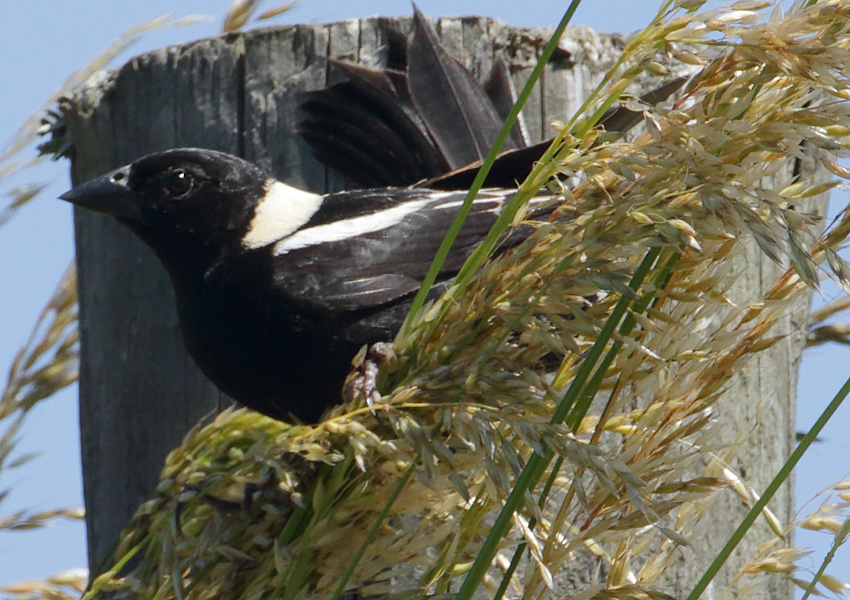
Bobolink
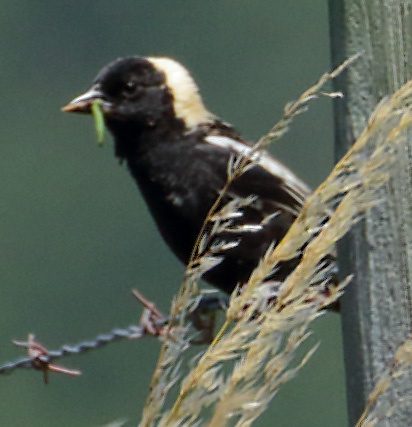
Bobolink
As we continued on that road, we saw a pair of Grasshopper Sparrows.
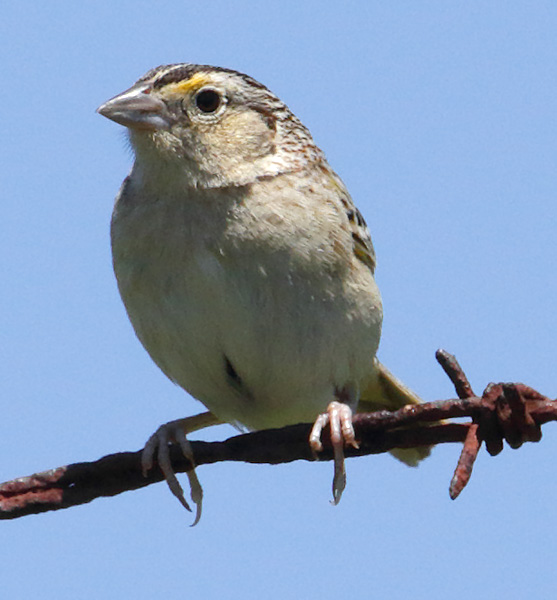
Grasshopper Sparrow
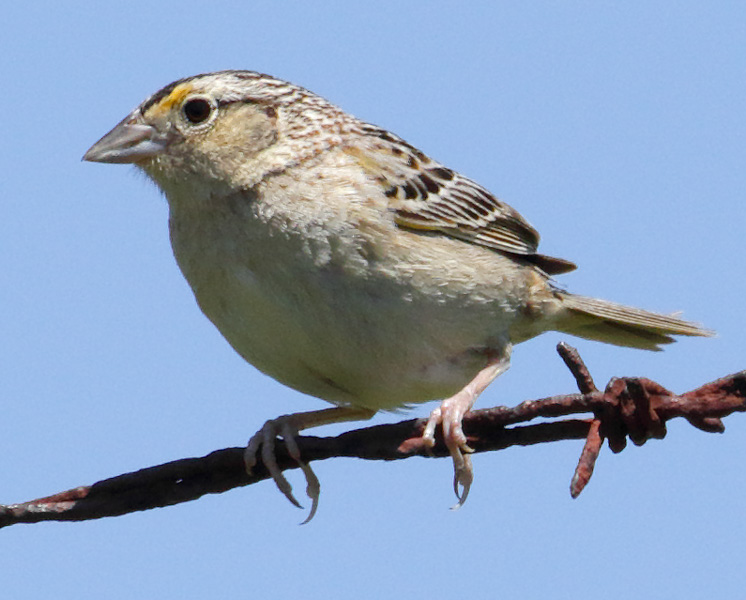
Grasshopper Sparrow
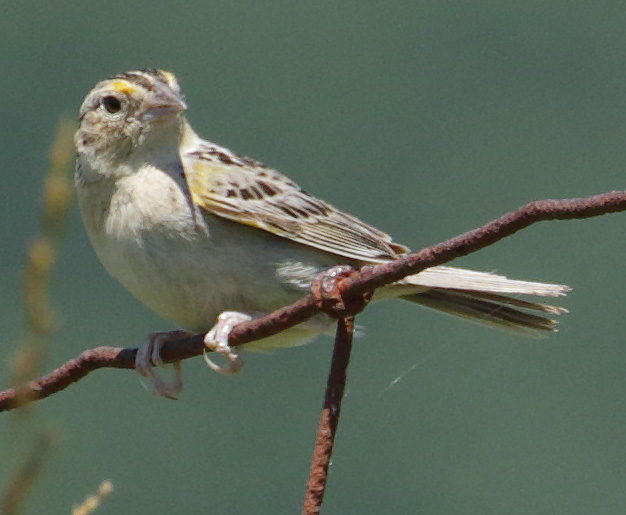
Grasshopper Sparrow
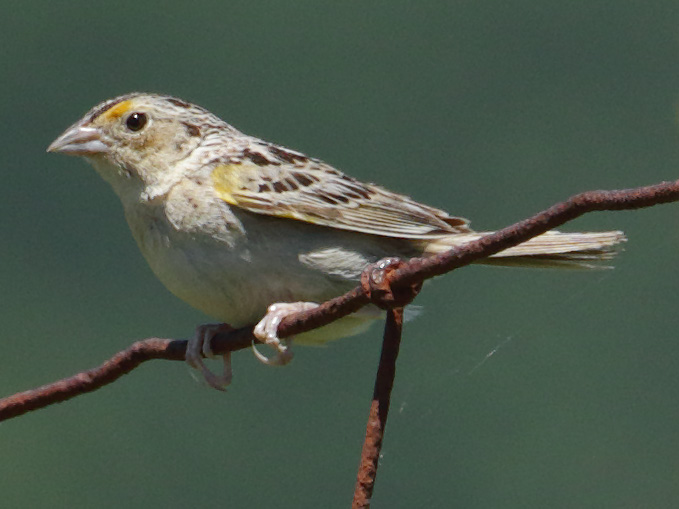
Grasshopper Sparrow
When we finished the North Mountain Road loop, we had to choose between going somewhere else, or doing more birding in Swoope. We really wanted to try again to locate the Northern Harrier, as well as finding a Bald Eagle. We first drove more to the south, and passed by a small creek along Shuey Road. We picked up a Belted Kingfisher there, and saw a female Wood Duck with little ones. The young Wood Ducks must have been from two broods, as some were very young in appearance.
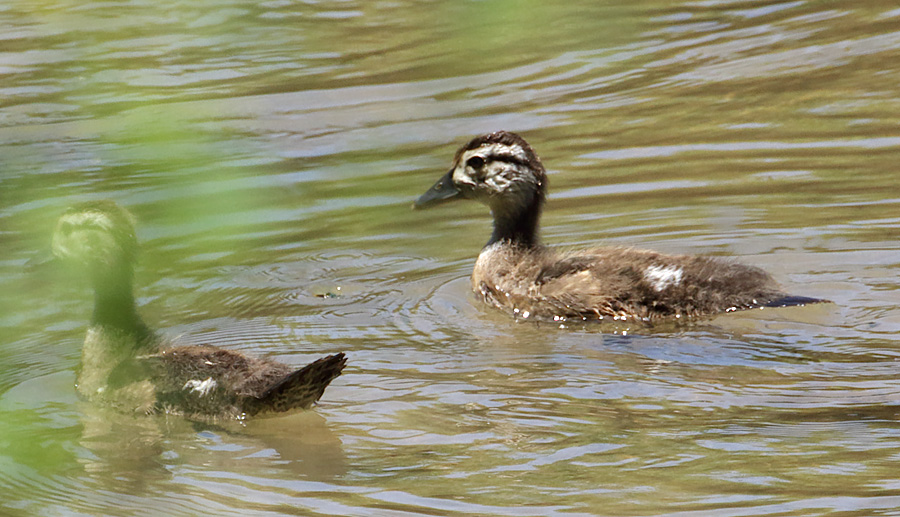
Wood Duck
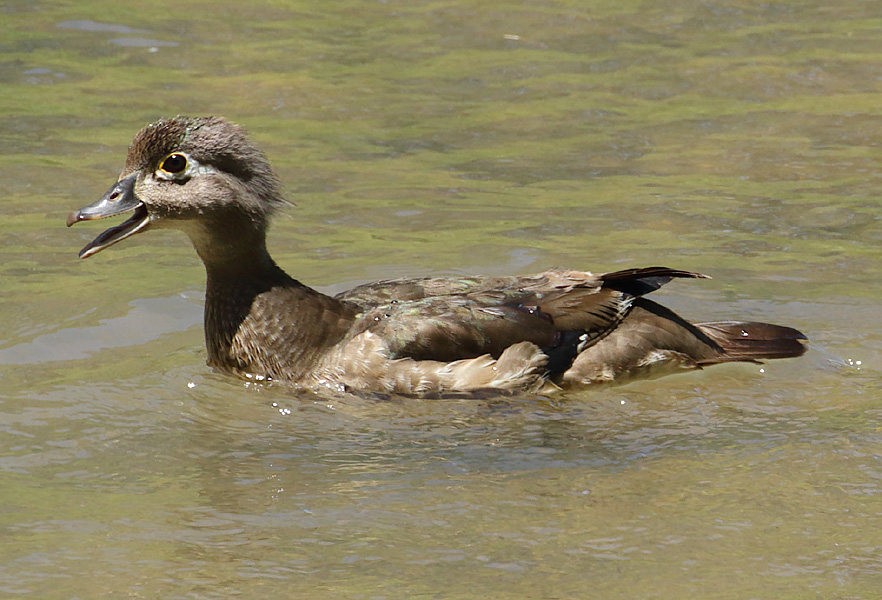
Wood Duck
Lots of birds were out with youngsters.
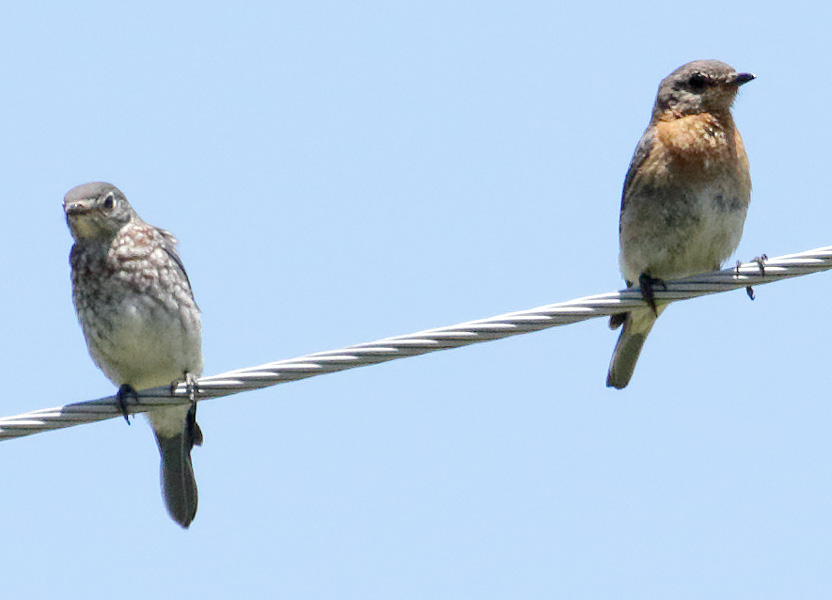
Eastern Bluebirds
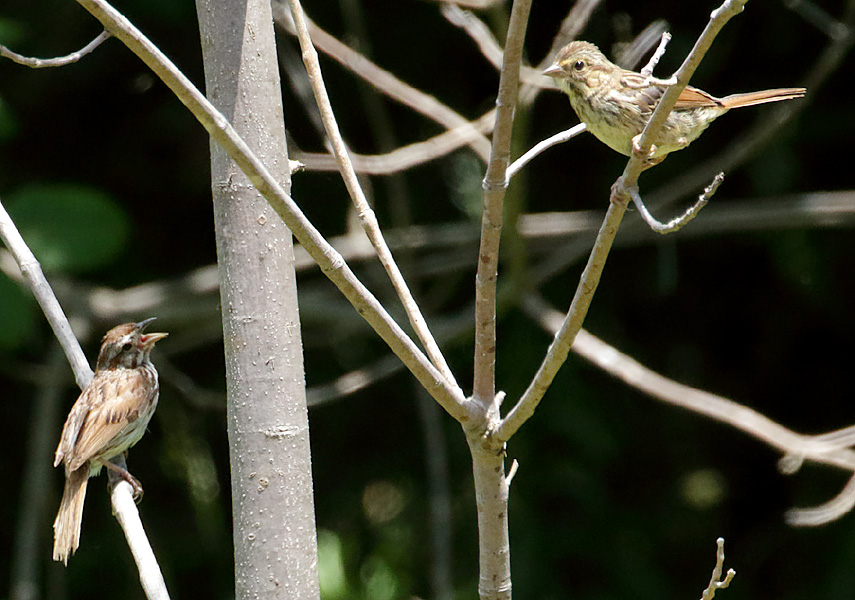
Song Sparrows
We drove the North Mountain Road loop again, but we didn't see any Bald Eagles, the Northern Harrier, or the Bobolinks. We did see another pair of Grasshopper Sparrows a good distance from where we saw the first two. We ended the outing with 42 avian species.